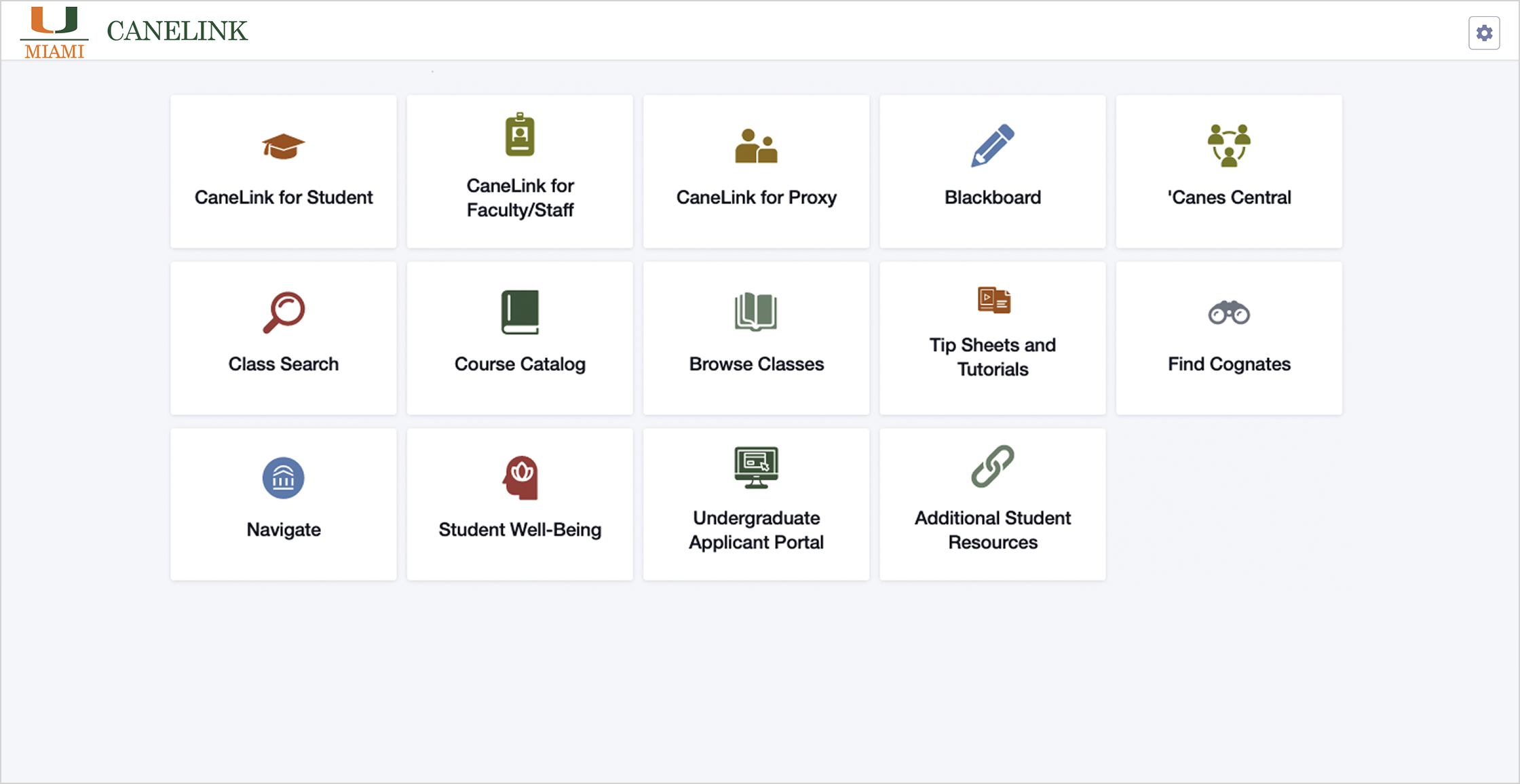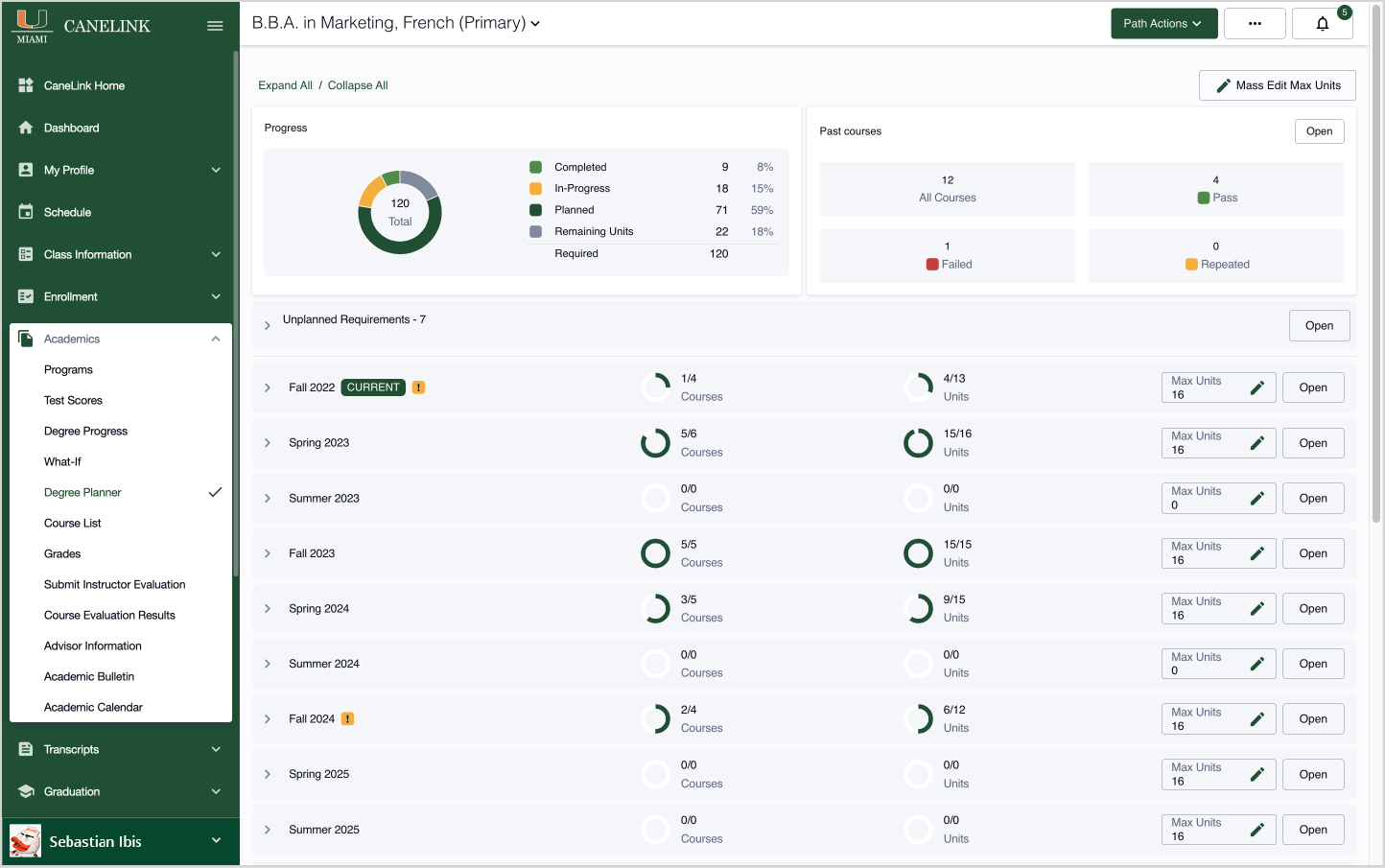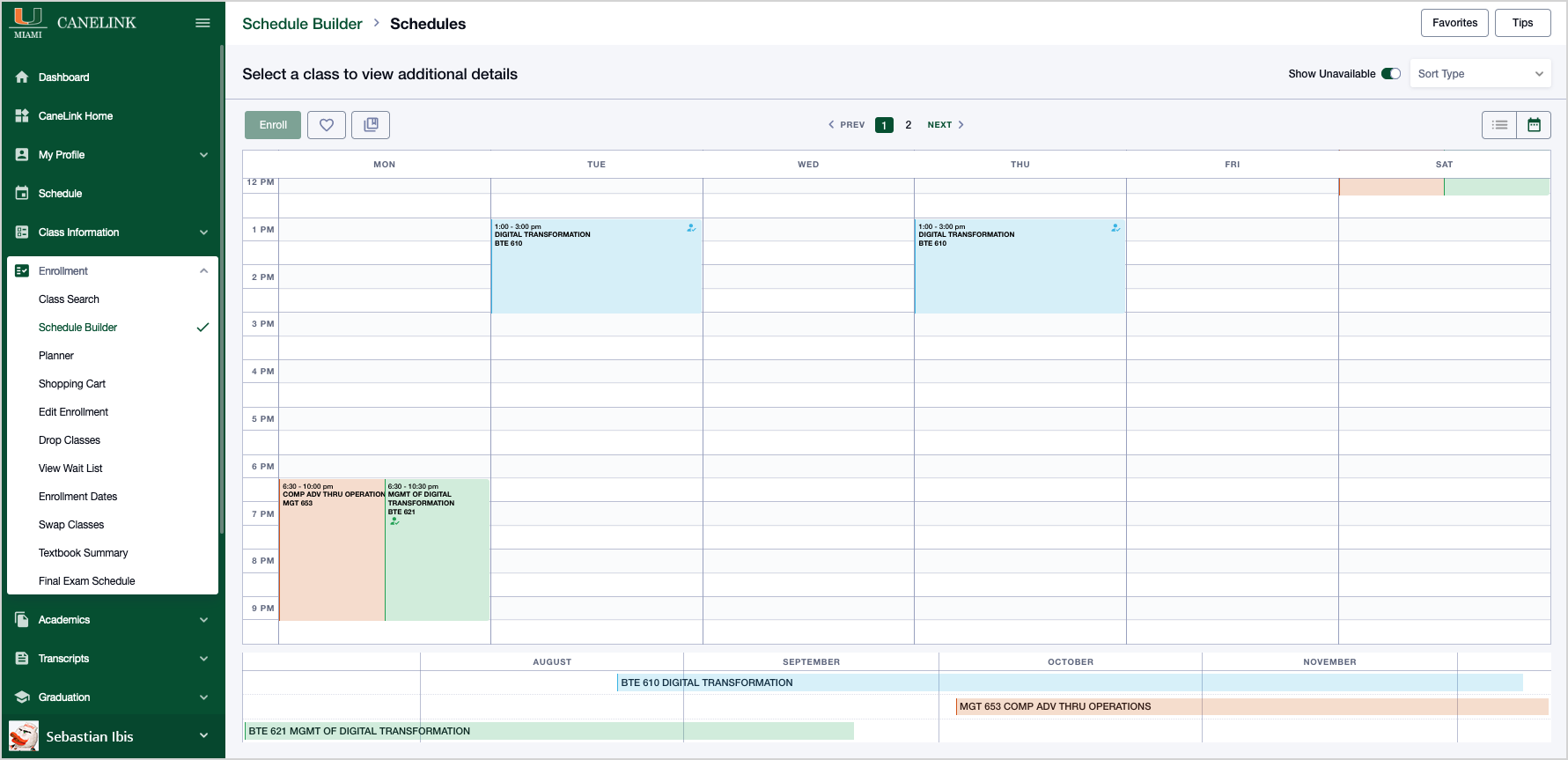To receive a bachelor’s degree from the University, students must earn a minimum of 120 credit hours. Some degrees or programs may require more. Regardless of the required minimum credits, students must have a C average (2.0) or better, as well as a C average (2.0) for all work done at the University of Miami.
Students must also meet all of the degree requirements of their respective schools. They should not expect requirements in composition, mathematics, foreign languages, or other subject areas to be waived for any reason.
- In addition, each student must complete at least half of the credit hours specified for his or her major in residence at the University of Miami; some programs may require more.
- Not more than 30 credit hours of correspondence work and extension work combined will be accepted toward a degree, and neither correspondence nor extension work may be credited as a part of the last 45 credit hours of the student’s program. Correspondence or extension coursework taken elsewhere must be evaluated and approved by the appropriate academic department.
- Not more than 30 credit hours based on military experience will be awarded toward the degree. Military experience is evaluated and approved on an individual basis and may or may not be accepted for credit or toward degree requirements.
- Credit hours earned in a manner other than by course registration, i.e. proficiency examination, CLEP, placement tests, etc., may not be used to meet the final 45 credit hour residency requirement, however such credit by examination may be earned while the student is enrolled in the courses needed to meet the final 45 credit-hour residency requirement. The awarding of credits outside of course enrollment must be approved by the appropriate academic department(s).
- Once a degree has been awarded, no changes will be made to the academic record. This includes but is not limited to transfer work, course enrollment, grades, and credits awarded.
Learn more about degree requirements*
*Please be sure to check the academic bulletin for your year of admissions to UM.








